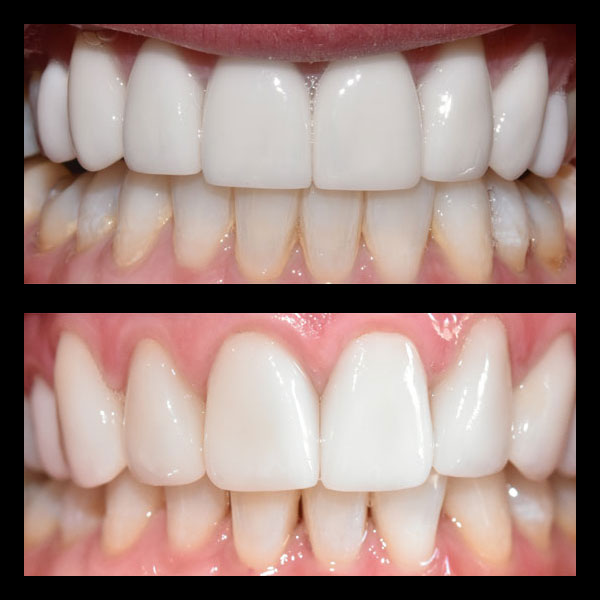After the journey of orthodontic treatment, achieving a beautifully aligned smile is a wonderful accomplishment. To preserve this hard-earned alignment, retainers play a vital role. Let’s dive into how retainers can prevent relapse and ensure your smile remains as perfect and straight as the day your braces came off.
Understanding Retainers: Your Smile’s Best Friend
Retainers are crucial in maintaining the dental alignment achieved through orthodontic treatments. Primarily, they are categorized into two types: fixed and removable. Fixed retainers are bonded to the back of the teeth and are more convenient for those who might forget to wear a removable one. On the other hand, removable retainers, such as Hawley or clear retainers, offer flexibility and ease of cleaning.
Each type of retainer plays a significant role in maintaining your straight smile by holding the teeth in their new positions until they stabilize naturally. Regular wear of your retainer as advised by your dentist is essential as it allows your teeth to adapt to their new alignment, preventing movement back to their original places.
At Incredible Smiles in Boulder, Colorado, we offer custom retainer solutions tailored to individual needs and preferences, ensuring both comfort and effectiveness. Choosing the right retainer is an important step in preserving the investment you’ve made in your smile.
How Retainers Prevent Relapse
The science behind maintaining teeth alignment involves the stabilization of the periodontal ligament and surrounding bone. After braces are removed, teeth have a natural tendency to revert to their original positions, a phenomenon known as relapse. Proper retainer use helps in the stabilization process by ensuring the teeth remain securely in their new positions until they are solidified by the surrounding structures.
Without a retainer, the risk of relapse increases significantly. Here’s a table comparing different scenarios of retainer usage:
| Retainer Use Scenario | Likelihood of Relapse | Outcome |
|---|---|---|
| Consistent nightly use | Low | Maintained alignment |
| Sporadic use | Moderate | Partial alignment loss |
| Rare or no use | High | Significant relapse |
Collagen, a protein in the gums, plays a pivotal role in dental stabilization. As new collagen fibers form around the teeth in their adjusted positions, the risk of movement decreases. Embracing these insights helps dispel common misconceptions about the necessity of retainers and highlights the real risks involved in neglecting them.
Incredible Smiles’ Unique Approach to Dental Retention
At Incredible Smiles, we blend physiologic dentistry with aesthetics to craft bespoke retention solutions. Our approach isn’t just about maintaining alignment; it’s about ensuring the teeth function harmoniously with the jaw and facial features for a naturally beautiful smile. Our tailored solutions continue to earn rave reviews from our patients, reinforcing our commitment to excellence.
Regular dental check-ups play a crucial role in identifying potential issues early, ensuring that your retainer is effective and your teeth remain in optimal alignment. Here’s a glimpse into what some of our patients love about our services:
- Expertise in personalizing retention plans
- Comprehensive aftercare and follow-up
- Attention to both function and appearance
- Warm and welcoming patient experience
These consistent praises reflect our dedication to providing superior dental care and commitment to helping our patients maintain their dream smiles.
Tips for Taking Care of Your Retainer
Proper maintenance of your retainer is pivotal to ensuring its longevity and effectiveness. Cleaning your retainer daily using a mild detergent or specialized retainer cleaner can prevent plaque build-up and ensure hygiene. Always store your retainer in its case when not in use to protect it from damage or loss.
Recognizing when it’s time to replace your retainer is essential, as wear and tear can reduce its effectiveness. A good practice would be to consult your dental provider at least once a year to assess the condition of your retainer.
Lifestyle habits can also impact your retainer’s lifespan and effectiveness. Here’s a list of dos and don’ts:
- Do clean your retainer regularly
- Do store it in its designated case
- Don’t expose it to heat or direct sunlight
- Don’t wear it while eating
Following these guidelines will help extend your retainer’s life, ensuring your smile remains as lovely as ever. By embracing these best practices, you can effectively preserve your newly aligned smile for years to come.
Frequently Asked Questions
What are the main types of retainers?
The main types of retainers are fixed and removable. Fixed retainers are bonded to the back of the teeth, while removable retainers, such as Hawley or clear retainers, offer flexibility and ease of cleaning.
Why is it important to wear a retainer after orthodontic treatment?
Wearing a retainer is crucial after orthodontic treatment because it helps maintain the new dental alignment by preventing teeth from moving back to their original positions, a process known as relapse.
What can happen if I don’t wear my retainer regularly?
If you do not wear your retainer regularly, the likelihood of dental relapse increases, potentially leading to partial or significant loss of teeth alignment.
How should I care for my retainer to ensure its effectiveness?
To care for your retainer, clean it daily with a mild detergent or specialized cleaner, store it in its case when not in use, avoid exposure to heat or direct sunlight, and do not wear it while eating.
How often should I check the condition of my retainer?
It is advisable to consult your dental provider at least once a year to assess the condition of your retainer and decide if it needs to be replaced.








